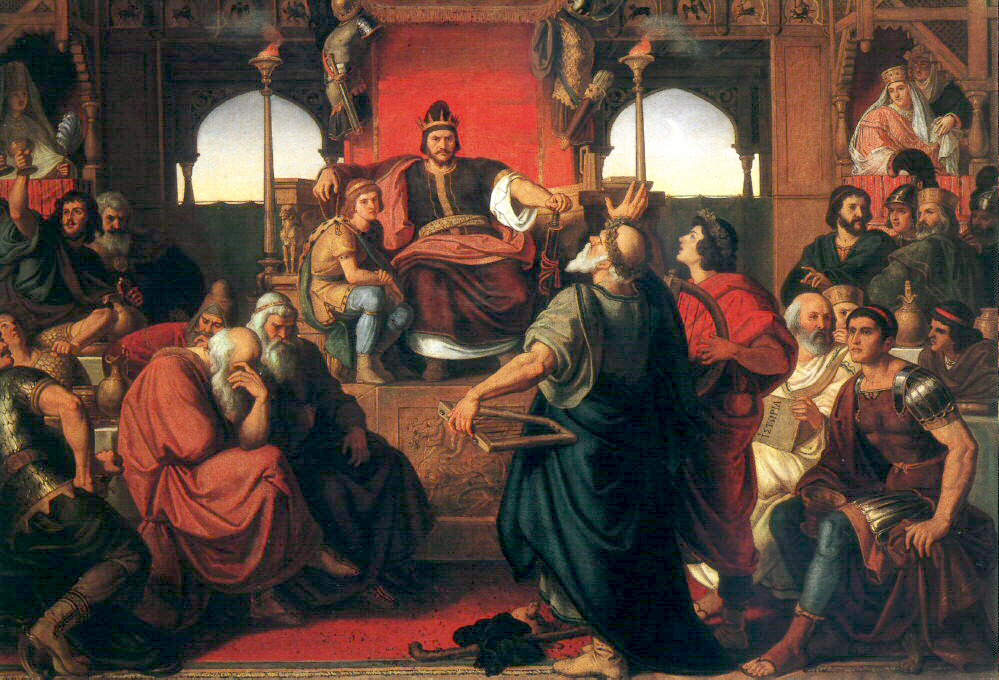
One Reader’s Opinion-by Simone T. Ribke
The book The White Stag is the mythological story of how the Hun Empire began in the fifth century. When I read the book I kept confusing Attila the Hun and Genghis Khan—not without good reason, as it turns out. While the two barbarian conquerors lived and ruled about 700 years apart, they both came from nomadic tribes that originated in or around Mongolia and both were considered two of the most fearsome invaders that Asia and Europe have ever seen.
If this article is about Attila the Hun, why mention Genghis Khan at all? Well, there’s a good reason and I kind of wonder if it’s bounced around in your mind the same way it has in mine. Did you see the Disney movie “Mulan” about the Chinese heroine who fights Genghis Khan’s Horde? In the movie, the Horde, as Khan’s armies were known, were depicted as fierce, almost inhuman barbarians that just wanted to kill, kill, kill. The Horde rode their fierce ponies in incalculable numbers across the Asian steppe to terrorize Mulan’s village and (in reality) a huge area of China. In the movie, even the Horde’s ponies were depicted as savage, with sharp teeth, and colored in drab and barbaric earth tones.
So now you either have that image in your head, or you’re going to Google images of “Mulan” and Genghis Khan to see what I’m talking about.
Throughout history, the Huns have been depicted in the same demonic light as Khan’s Horde in “Mulan,” and Attila was, in fact, known as “The Scourge of the Earth.” The Huns were considered fierce and barbaric fighters who ate raw meat, lived on horseback, and enjoyed nothing more than going to battle and destroying villages. There was a bit of truth to that, but it may not be as it appears and the reason for that is perspective.
What we know about the Huns we only know from the perspective of the Romans, because the Romans wrote the majority of the records that remain about the Huns. The Roman Empire at the time had conquered and ruled over much of Europe and into parts of Asia. Attila largely targeted these regions and the Roman Empire considered them a major threat to its rule. Furthermore, the Romans considered themselves to be a highly advanced civilization and looked down on nomadic peoples like the Huns as uncivilized and barbaric.
Rome had a hard time fighting off the Huns, in large part due to the Roman style of warfare, which was predominantly made up of foot soldiers who fought in rectangular formations called phalanxes. The Huns, on the other hand, were a mounted army that could shoot arrows from the saddle and accurately hit a target 200 yards away in any direction. While mounted on their horses, the Huns could literally run circles around the Roman troops. On a side note, the Romans even considered the Huns’ ponies to be barbaric—which, in comparison to the large and graceful horses kept by the Romans, they kind of were. But the steppe ponies gave the Huns a great advantage over the Roman’s more delicate horse breeds; the steppe ponies did not need to be stabled, were so hardy that they could withstand both heat and extreme cold, and were able to subsist by grazing on the vegetation available to them.
But were the Huns the barbarians that the Romans made them out to be? Let’s start with the fact that the Romans were pretty barbaric themselves. The Roman Empire criticized the Huns for doing many of the same exact things that it did regularly, such as raiding new lands; brutally killing, burning, pillaging, terrorizing, and punishing the inhabitants, and taking slaves. I personally think the Romans took their barbaric ways one step further by forcing some of these slaves to fight to the death before large, jeering crowds in giant stadiums called amphitheaters.
So why does history remember the Huns as horrifying barbarians? Other than what Romans wrote about them, there may be a few good reasons.
The Huns practiced head shaping. Head shaping is the custom of binding an infant’s head tightly with bandages for extended periods of time in order to reshape the child’s skull. Instances of this practice are probably best known from Ancient Egypt, where royal Egyptians bound their babies’ heads and, as a result, had a very elongated skull. The Huns, too, wrapped their babies’ skulls, so as adults, their heads were very long in the back, which made the tops of their heads look taller. This distinct feature made the Huns appear very different and extremely frightening to the people being attacked by the Huns.
The Huns lived in their saddles. The Huns learned to ride horses as soon as they could walk. Being nomads, they were always on the move and learned to do everything from horseback, including eating, cooking, trading, and sleeping. This fact would have been very unsettling to the sedentary (non-nomadic) people they conquered.
The Huns were expert archers who could accurately shoot arrows from horseback, an ability that made their army exceptionally lethal. They used a special type of saddle that had a high front and back, which helped them stay steady in the saddle and prevented them from falling off the horse easily. Warfare in those days was more about hand-to-hand combat, which required fighting soldiers to get very close to each other. The Huns, however, didn’t need to get too close to their enemies to kill them—this maximized the number of enemy soldiers the Huns could kill and minimized the number of Huns that were killed by the enemy.
The Huns ate raw meat. Well, kind of. The Huns were known to “cook” a slab of meat while on horseback. A Hun would place the piece of meat between his leg and his horse’s side and ride around with it there all day. The heat created between man and horse would “cook” the meat, the horse’s sweat salted the meat, curing it somewhat, and the meat was tenderized by being pounded around all day between leg and horse. While this alone is pretty gross, I can’t help but wonder if they picked all the horsehair off their steaks before eating them.
Despite their strange appearance, nomadic horseback lifestyle, and unsanitary eating habits (and the fact that Attila assassinated his brother so that he, alone, could rule the Hun Empire), the Huns had quite a few things going for them. Attila the Hun, as it turns out, was brilliant in his ruling strategies. Not only was he able to keep his massive empire under control, he also had a brilliant scheme for making money for his empire. If he had a to-do list for his scheme, it would probably look something like this.
- Attack foreign lands with my massive, well-trained army. Be extra harsh about it so that word spreads far and wide about our brutality and military prowess in order to make them think we’re unbeatable.
- Threaten to conquer new lands and make their leaders so scared that they’re willing to pay us anything not to attack them.
- Make a treaty with those leaders and get them to pay us tons of gold each year. In return, we promise not to attack them. Why attack new lands for gold when we can get them to just give us the gold without all the trouble of fighting?
- Collect tons of gold and enjoy life.
Attila’s gold-collecting strategy—commonly known as extortion—was one of the most effective in history and the fees he demanded nearly bankrupted the Roman Empire.
The Huns weren’t unjust barbaric rulers, however. They were apparently fair (Hun-style) to the people who lived under their rule. For example, they allowed the people living in their colonies to practice freedom of religion. The Huns also made a point of learning new technologies and skills from the foreign lands they ruled. While they might not have brought much advanced technology with them—other than their special bows—they were very willing and interested to incorporate modern technology and techniques into their daily lives. What’s more, Attila the Hun was able to keep his Empire well organized and controlled for the entire length of his reign (from 434–453 CE)—which meant that his colonies lived with some semblance of stability—something few “advanced” rulers like the Roman Emperors were able to accomplish.
My conclusion about the Huns is that they weren’t any more or less barbaric than other conquering nations throughout history. Their lifestyle—and appearance—may have been different to the European and Roman lands that they conquered, but it doesn’t meant they were more barbaric. It just means they were different.



 About BeeLine
About BeeLine